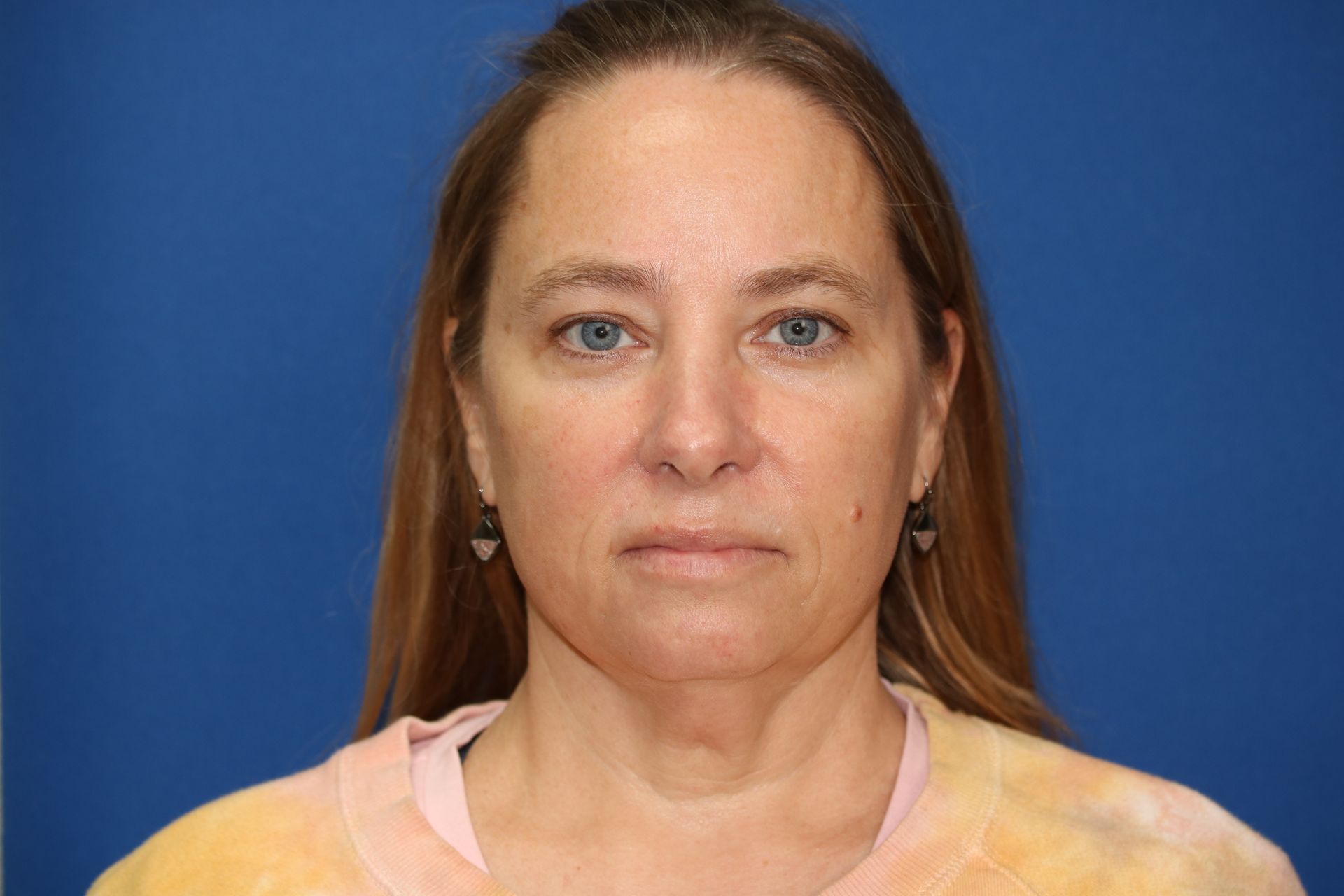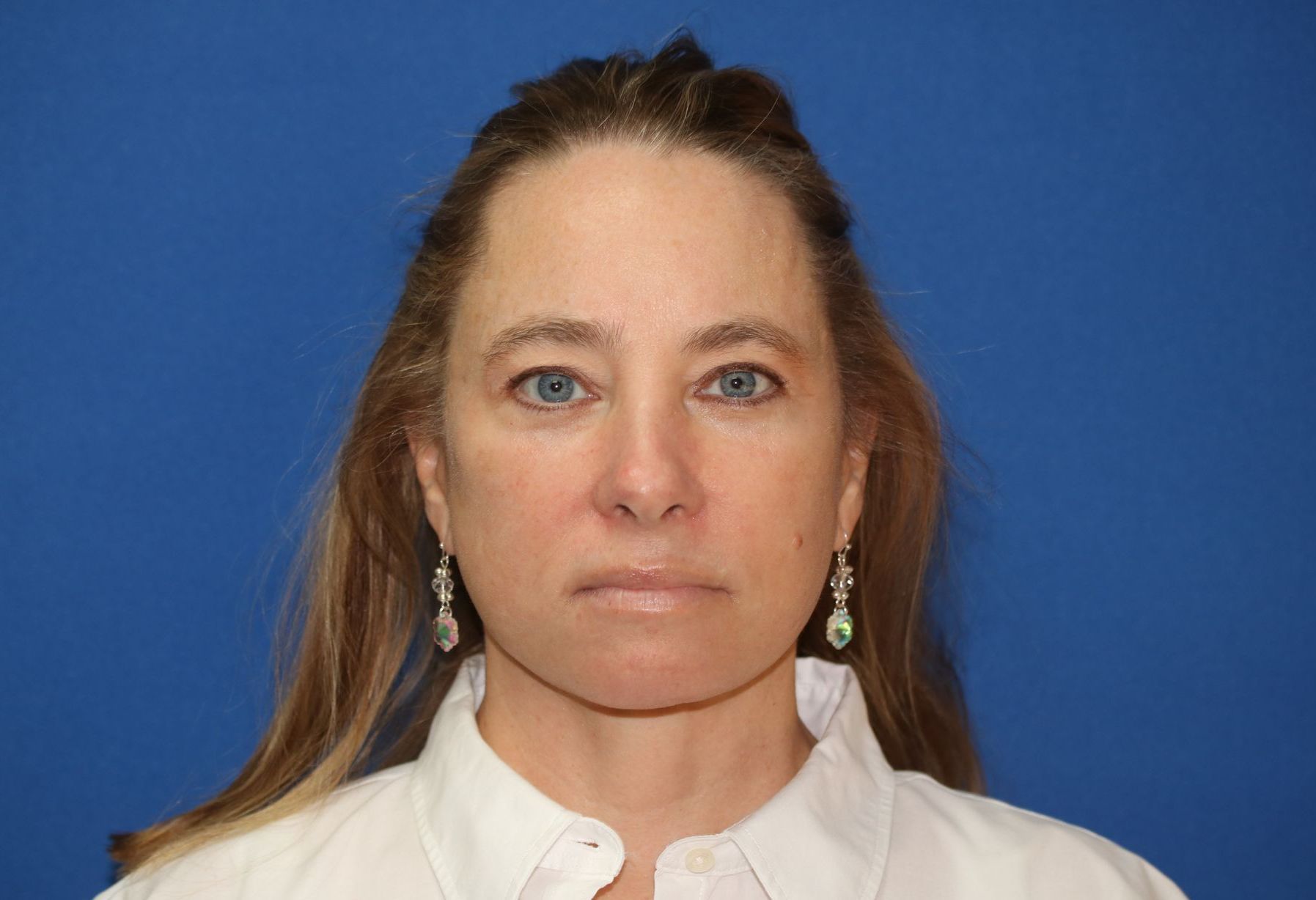Precision Facelift Surgery in Overland Park
Restore youthful contours and redefine your confidence with a customized facelift.
What is a Facelift?
As we age, skin laxity, jowl formation, and sagging tissues under the chin can create an aged or tired appearance. A facelift (rhytidectomy) is one of the most effective procedures to rejuvenate facial features that addresses signs of aging, such as:
- Drooping cheeks
- Sagging jowls
- Loose neck skin
- Poorly defined jawline
Facelift surgery improves facial harmony by lifting and repositioning the underlying structures of the face: tightening the skin, lifting the cheeks, refining the jawline, and restoring youthful balance.
At CWFPS, we specialize in advanced facelift techniques, including the deep plane facelift, to achieve natural, long-lasting results tailored to each patient’s anatomy and goals.
Types of Facelift Techniques
Facelift surgery has evolved dramatically over the years. Understanding the differences helps patients choose the best procedure for their needs.
Traditional Skin-Only Facelift
Earlier facelift techniques focused on tightening only the skin, which often produced results that looked stretched and faded quickly. This approach has largely been replaced by more advanced methods that address deeper facial structures.
SMAS Facelift
The Superficial Musculoaponeurotic System (SMAS) layer plays a key role in facial support. By tightening this deeper layer, surgeons can create more natural, longer-lasting results. Techniques include:
- SMAS Plication and Imbrication Lifts – Fold or reposition the SMAS for moderate rejuvenation.
- High SMAS Lift – Elevates tissues higher in the face to enhance cheek definition.
- Mini Lift (Lateral Lift) – A less invasive option focused on early signs of aging.
Deep Plane Facelift
The deep plane facelift represents the most advanced and comprehensive approach to facial rejuvenation. Unlike traditional SMAS techniques that pull tissues laterally (toward the ear), the deep plane facelift releases and repositions the deeper facial structures medially, near the smile lines, where aging actually occurs.
Benefits of a Deep Plane Facelift:
- Natural, youthful results without a “pulled” look
- Long-lasting improvement in the cheeks, jawline, and neck
- Correction of sagging at the source of facial aging
- Smooth transition between face and neck for a harmonious contour
Facelift Recovery Timeline
Recovery is an important part of achieving optimal results. Most patients experience manageable swelling and bruising that resolve over time.
Days 1–3
- Rest at home; no hospital stay required
- Apply cold packs to reduce swelling
- Get up and move around gently, blood circulation is good for healing
- Perform excellent wound care per provided instructions
- Sleep on your back with head elevated
- Expect peak swelling around day 3–4
Days 7–14
- Stitches and drains removed
- Bruising significantly improves
- Continue elevated sleeping on your back
- Light activities and short walks encouraged
- Driving is permitted once neck movement is comfortable
Weeks 2–4
- Resume light to moderate exercise
- Swelling mostly resolved
- Most patients feel comfortable socializing
Full Recovery
- Most patients return to normal activities by week 3–4
- Final results typically visible at 3–6 months
Frequently Asked Questions About Facelift Surgery
What is the cost of a facelift?
Facelift surgery typically ranges from $15,000–$20,000, depending on the technique and individual needs.
Is anesthesia used?
Yes. All facelifts are performed under general anesthesia at an accredited outpatient surgery center with a board-certified anesthesiologist.
Where are the incisions?
Incisions are discreetly placed near the sideburn and ear, with a small one under the chin, allowing scars to blend naturally into the hairline and facial creases.
Is a facelift painful?
Most patients experience mild tightness rather than pain. Usually there is tightness for the first few weeks, with the most discomfort in the first 4 days. If there is some bothersome discomfort, it is usually around the earlobes and is well controlled with a combination of medications, usually not narcotics.
What is the downtime like?
The first week involves the most swelling and rest, but people still feel good enough to get up and go for little walks and move about the house. By the third week most people are ready to get back out to dinner or socialize. Light exercise can be resumed in the third week and progressively increase. Most patients are fully healed between 3-6 months after surgery.
What is the difference between a deep plane facelift and a traditional facelift?
Traditional facelifts often tighten only the skin or pull the SMAS layer laterally, which can create a stretched appearance. A deep plane facelift releases and repositions the deeper facial tissues medially, correcting sagging cheeks, jowls, and neck skin for natural, long-lasting results.
Can a facelift be combined with other procedures?
Yes. Many patients combine a facelift with procedures such as neck lift, brow lift, or blepharoplasty (eyelid surgery) for full facial rejuvenation. Combining procedures can optimize results and streamline recovery.
Why Choose CWFPS for Facelift Surgery?
At Carson Williams MD Facial Plastic Surgery (CWFPS), we bring extensive experience in advanced facelift techniques, including the deep plane method. Each procedure is customized for natural-looking results that preserve your unique character and enhance facial harmony.
Discover how a facelift at CWFPS can help you look as vibrant as you feel.





